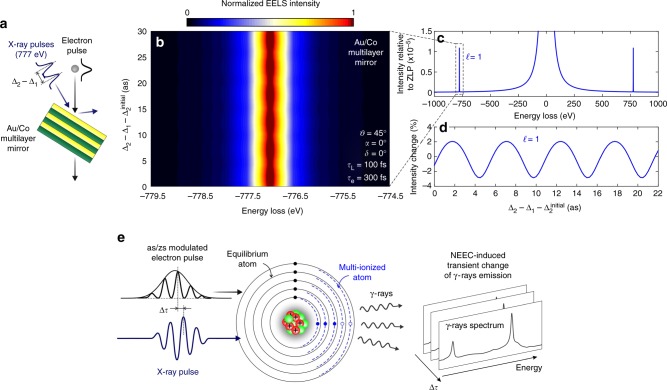Fig. 7.
Zeptosecond coherent control of free-electrons. a An electron beam interacts with a semi-infinite temporally modulated X-ray field (777 eV photon energy) produced by a sequence of two mutually phase-locked pulses partially reflected by a Au/Co multilayer. b Calculated EELS spectra as a function of relative delay Δ2 − Δ1 between the two X-ray pulses. The tilt angles are set to ϑ = 45° and α = 0°, while the X-ray pulses are 100 fs long with a peak field amplitude of 9.4 × 109 V/m per pulse. Simulations are performed within a 30-attosecond window starting from = 150 fs (Δ1 = 0). c Calculated EELS spectrum showing the electron sidebands at energies of ±777 eV with respect to the ZLP. d Relative intensity change of the sideband plotted as a function of time delay between the two X-ray pulses, exhibiting a periodic modulation of period ≈5.3 as (equal to the X-ray cycle) and an intensity change rate of ≈1% per 511 zs. e Schematic description of a gedanken-experiment for external control of nuclear excitations. A train of zs electron pulses is overlapped with the optical cycle of an X-ray pulse. Their relative delay Δτ is externally varied while monitoring the change in the γ-ray emission as a result of multiple ionization/electron capture events. The atomic levels for the equilibrium and ionized atom are pictorially represented

